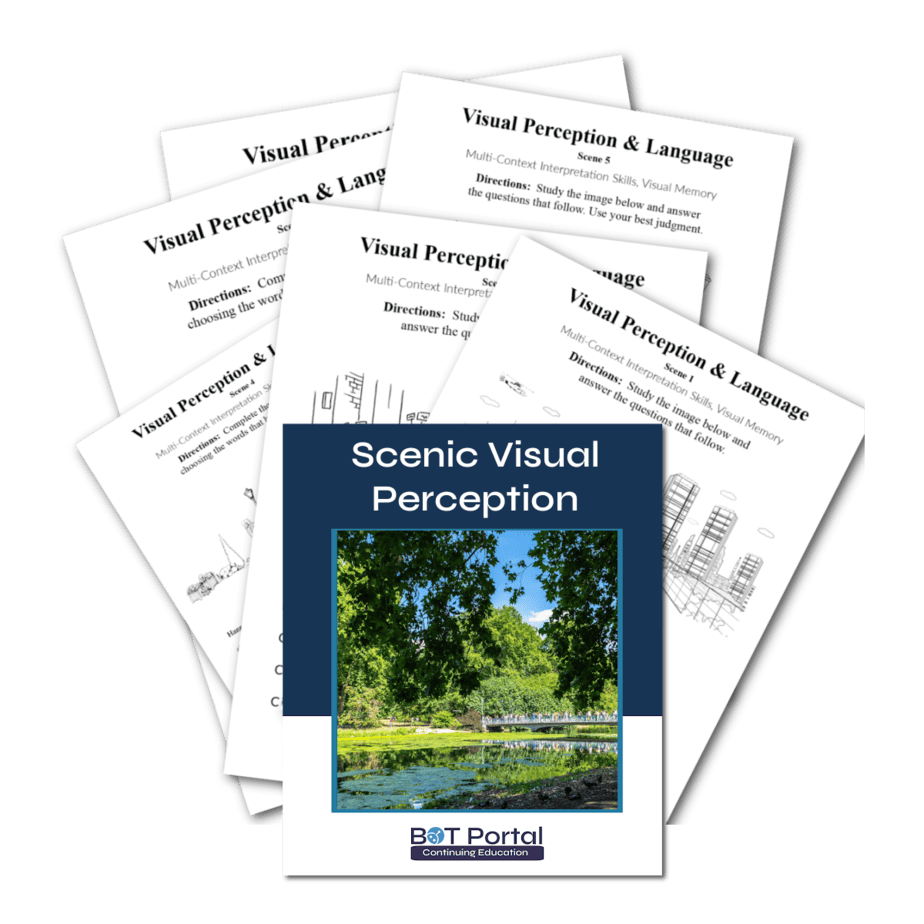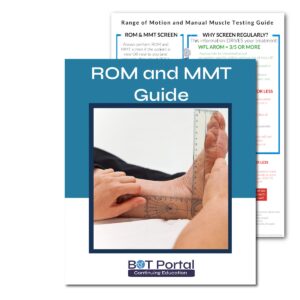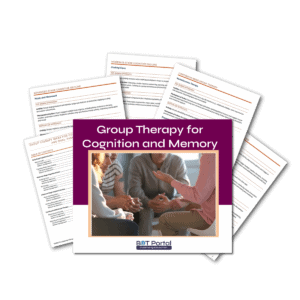Description
Scenic Visual Perception
Analyze Contexts, Extrapolate Meaning, Visual Perception Skills
Download the pdf for “Scenic Visual Perception” to help improve executive function, visual perception, numerous forms of attention, abstract reasoning, extrapolation, visual-motor integration, and so much. more. These worksheets offer 6 pages of different images that will prompt your patient to work on skills they may be neglecting or overlooking! You these worksheets in session or for home exercise programs! You decide!
Recommendations for treatment:
- Print and Laminate or keep a stack on hand to assign for homework practice
- Use in the initial treatments with a stopwatch timer for baseline of executive function, ability to follow instructions, remain attentive to task, visual perception/visual discrimination
- Use as discourse prompts based on context interpretation and/or leisure or social-based scenarios
Longer Description:
Occupational therapy practitioners are well aware of the intricate interplay between cognitive skills and occupational performance and uses scenic vsual perception worksheets to enhance executive function, visual perception, attention, abstract reasoning, and more.
But why are scenic visual perception and context analysis so crucial? Let’s paint a picture with a real-life example. Imagine a client returning to work after a traumatic brain injury. They struggle with executive function deficits, impacting their ability to follow instructions and remain attentive to tasks. By engaging in activities that prompt them to analyze visual scenes and extrapolate meaning, such as those provided in these worksheets, this client can sharpen their cognitive skills and improve their occupational performance. For instance, they may need to identify objects in a busy street scene or interpret social cues in a group setting, enhancing their ability to navigate real-world scenarios effectively.
These worksheets offer six pages of different images, each designed to prompt clients to work on skills they may be neglecting or overlooking. Whether used in therapy sessions or as part of a home exercise program, these versatile worksheets provide therapists with a valuable tool to address a wide range of cognitive challenges.
Here are some recommendations for incorporating these worksheets into treatment:
1. Print and laminate: Keep a stack of these worksheets on hand to assign for homework practice. By printing and laminating the sheets, therapists ensure durability and reusability, allowing clients to practice their skills independently at home.
2. Baseline assessment: Use the worksheets in initial treatments with a stopwatch timer to establish a baseline for executive function, ability to follow instructions, attention, and visual perception. This baseline assessment provides valuable data for tracking progress over time and tailoring interventions to meet the client’s specific needs.
3. Discourse prompts: Use the images as discourse prompts based on context interpretation and leisure or social-based scenarios. Clients can practice interpreting visual scenes and discussing their implications, fostering critical thinking and communication skills.
By incorporating “Scenic Visual Perception” worksheets into therapy sessions, occupational therapists empower clients to enhance their cognitive abilities and achieve success in their daily lives. These worksheets offer a practical and engaging way to target a wide range of cognitive skills, ultimately improving occupational performance and quality of life.
What is included:
- 7 pages of scenes and questions
Some other helpful links:
Check out BOT Portal: Resource Site for Occupational Therapy Students and Practitioners




